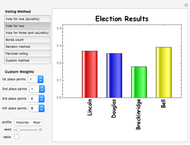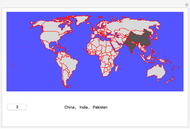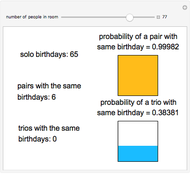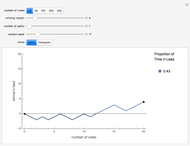The Ballot Problem

Requires a Wolfram Notebook System
Interact on desktop, mobile and cloud with the free Wolfram Player or other Wolfram Language products.
Consider an election with two candidates A and B resulting in  votes for A and
votes for A and  votes for B. If candidate A wins the election, the ballot problem is concerned with the probability that A was in the lead throughout the entire voting process. The ballot-counting process may be interpreted as a simple one-dimensional random walk with a step of
votes for B. If candidate A wins the election, the ballot problem is concerned with the probability that A was in the lead throughout the entire voting process. The ballot-counting process may be interpreted as a simple one-dimensional random walk with a step of  for each vote for A and
for each vote for A and  for each vote for B. The ballot problem asks for the probability that a simple random walk from
for each vote for B. The ballot problem asks for the probability that a simple random walk from  to
to  is strictly positive except at the origin. This probability turns out to be
is strictly positive except at the origin. This probability turns out to be  .
.
Contributed by: Jose Sanchez and Madina Bolat (September 2016)
(Illinois Mathematics Summer REU Program 2016)
Open content licensed under CC BY-NC-SA
Snapshots
Details
Permanent Citation

















